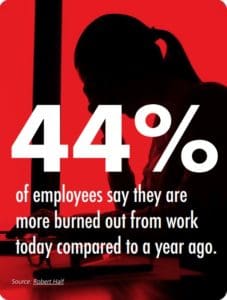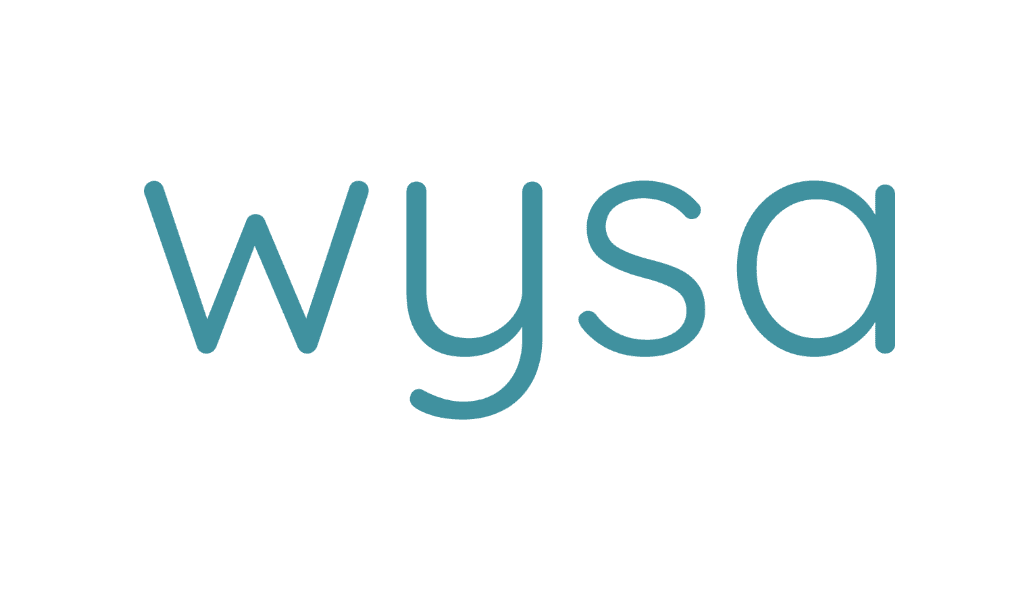Three best practices for combating employee burnout and disengagement after a long and uncertain year and a half.
By Fran Lawler
As most companies enter their 18th month of working from home, employers across the world are combating employee burnout in the workplace. Everyday issues such as Zoom fatigue and the pandemic blues exacerbate feelings of disengagement -and are putting companies in unique and complicated positions.
Burnout and disengagement can quickly become toxic to any organization. To address this, company leaders must assume the mantle of leadership with personal passion and a level of commitment to reinvigorate employee spirits. Successful leaders must be willing to do the hard work, set a clear example of what is expected, and model personal commitment to the entire organization.
Here are three key methods that can boost passion, commitment, and receptiveness to curb employee burnout and disengagement in a remote environment. 
- Become the chief “we can do this” officer. Strong leadership is essential to maintaining an engaged workforce, and executives must exude passion and energy to combat burnout across the organization. This starts with de-prioritizing your “C suite” title and becoming your company’s chief “we can do this” officer. Employees see and respect a hard work ethic and that trickles down to those who notice and emulate a proactive and hardworking attitude. Finding opportunities to share unique perspective and verbalize confidence in the team on a regular cadence will also be fruitful for employees in a remote work environment.
One of the most rewarding parts of the work of a CHRO includes communicating to the entire workforce regularly. This regular, consistent communication can enhance trust and credibility. From larger company email updates to more casual check-ins and messages, personal communication creates a stronger sense of connection and community for employees which helps combat apathy. - Rally employees around company vision. Another way to combat burnout and revitalize employee spirit is to rally them around the organization’s vision and purpose (which can be challenging in a remote environment). It’s crucial for executives to remind employees that their work directly contributes to the bigger picture and, ideally, paint a picture of how the company’s vision impacts the surrounding community and world. When employees feel a deep sense of purpose in their company’s mission, they inevitably develop a more positive connection with their work and its impact. Especially during periods of turmoil, it’s important to gather around mission statements to reduce burnout and maintain motivation.
It’s helpful to create a few short catchphrases, like “customers first,” “speed matters,” or “action and accountability.” This sends a clear signal to the organization of what the company’s priorities are and direction on how to be successful. Once these catchphrases are established, repeat them often and soon the entire organization will be leading the chorus in their daily actions. - Support moments of unplugging. More than four in 10 employees (44%) say they are more burned out on the job today compared to a year ago, according to a new survey from Robert Half, which is up from 34% from a similar poll in 2020. One of the main symptoms of employee burnout is disengagement and apathy, and with numbers like this, it’s crucial for leaders to encourage their employees to take well deserved breaks from work. Leaders must first set an example for the company when it comes work-life-balance. The best leaders actively engage with employees to encourage breaks throughout the workday, as well as paid time off, to create an environment that supports moments of unplugging, rest, and relaxation.
Try developing a newsletter that shares tips on how to disconnect from work, such as setting boundaries and not emailing before or after certain times. Find ways to lead by example and verbalize how leaders are unplugging. If possible, leverage social crowdsourcing to encourage others to share their stories and best practices, which brings the issue into the open and encourages connection. * Unchecked burnout can lead to apathy, which is the absence or suppression of passion or excitement, and lack of interest in things that others find moving or exciting. No matter the industry, burnout and apathy can be destructive and contagious for any organization and leaders must address it quickly before it spreads.
Many expect that remote work or a hybrid model will be the new norm for employers across the world. Creating a culture of connection, support, and flexibility -and clearly communicating the organization’s mission and purpose -will be crucial for leaders today and in the future to effectively build and retain talented teams and drive success.
Fran Lawler is chief human resources officer for athenahealth.














